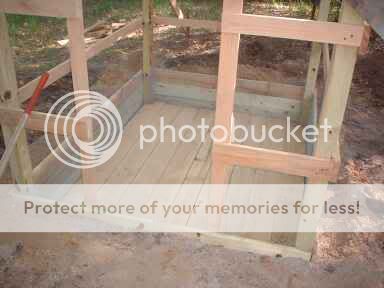I explained to DH the DLM idea of the new coop he was going to build for me, then I went to visit my family for a week. Apparently he took my desire for DLM to heart and dug the floor down to a foot below grade, laid wire mesh and put oak boards on top. So it seems I have a really big hole to fill or else I will need a ramp up for the chickens to get outside.

I did a search but only found pieces of the info I was looking for. So, for all you smart chicken people here, how should I fill up this hole? ( I know I can add stuff as the year goes on, but I've got to start with something to increase the base.)
I was thinking for a base, about 4 inches of sand, that will get me back up to 8 inches below grade and provide good drainage for any excess water spillage.
then a mixture of shredded/chopped:
straw
dried oak leaves
dried maple leaves
grass clippings (green or dried?)
semi-dried tag alder (speckled alder) branches
Good ideas? Bad? I own a small chipper/shredder so I can do all this, it will just take time.
I mention the alder because it grows like weeds around here (I live in a swamp) and has to be pruned away from the trails regularly. It's a wet wood but we'd chop it down and let it age a few weeks first. If it's not a good idea though I could use maple tree branches.
Whatever I do, I think the chickens are still going to need a ramp.


I did a search but only found pieces of the info I was looking for. So, for all you smart chicken people here, how should I fill up this hole? ( I know I can add stuff as the year goes on, but I've got to start with something to increase the base.)
I was thinking for a base, about 4 inches of sand, that will get me back up to 8 inches below grade and provide good drainage for any excess water spillage.
then a mixture of shredded/chopped:
straw
dried oak leaves
dried maple leaves
grass clippings (green or dried?)
semi-dried tag alder (speckled alder) branches
Good ideas? Bad? I own a small chipper/shredder so I can do all this, it will just take time.
I mention the alder because it grows like weeds around here (I live in a swamp) and has to be pruned away from the trails regularly. It's a wet wood but we'd chop it down and let it age a few weeks first. If it's not a good idea though I could use maple tree branches.
Whatever I do, I think the chickens are still going to need a ramp.






